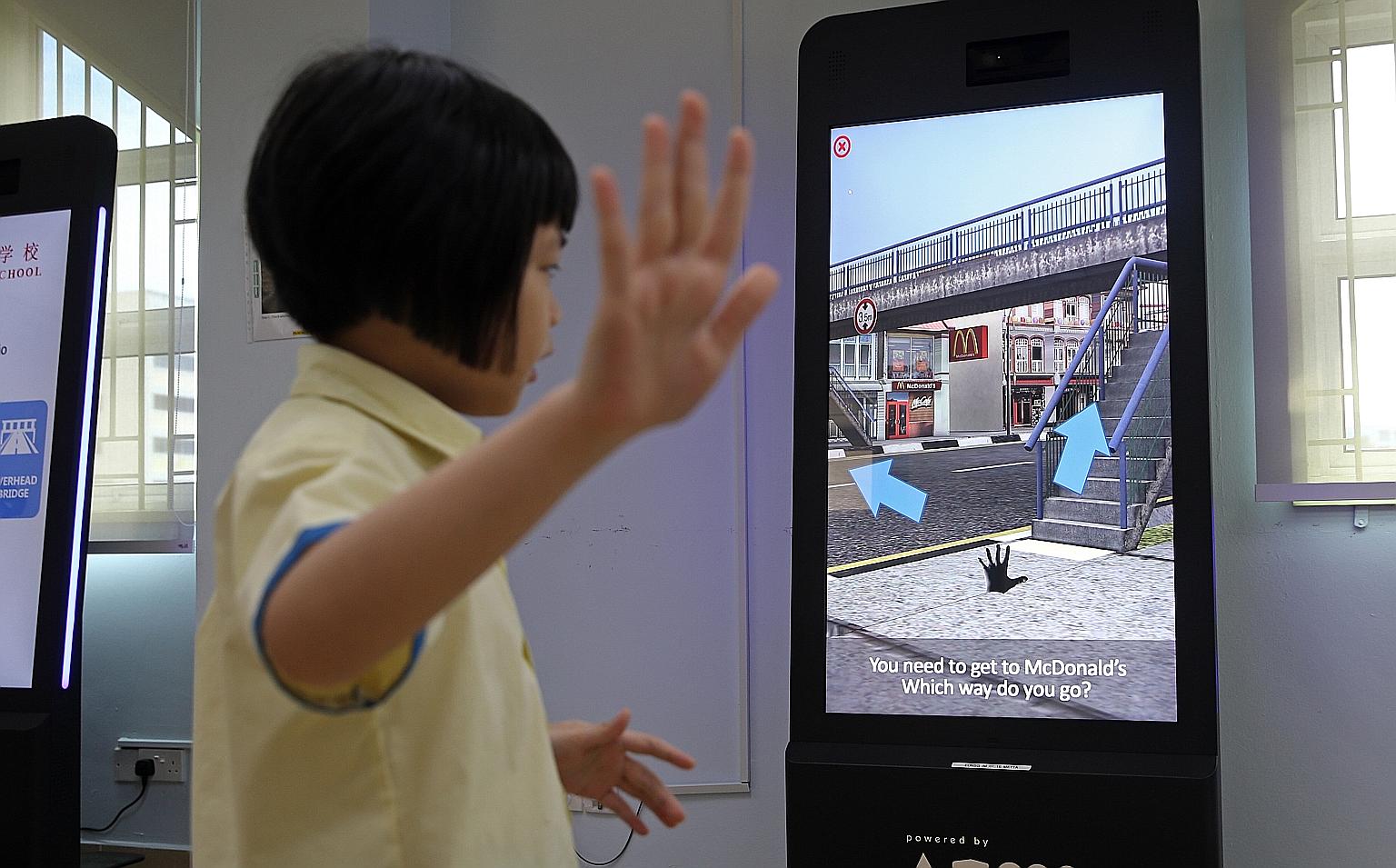Kids with special needs pick up real-life skills virtually
Sign up now: Get ST's newsletters delivered to your inbox

Pupil Stefanie Ang, eight, learning how to use the overhead bridge through a virtual reality game.
ST PHOTO: SEAH KWANG PENG
Yuen Sin
Follow topic:
Pupils at Metta School, a special needs school, go on monthly social confidence outings to help them get used to navigating real-world conditions independently, such as taking the MRT or crossing the road.
But with many of them having conditions like autism and mild intellectual disabilities, cars, motorcycles, impatient commuters and even street signs are a minefield of distractions that could compromise their safety.
"They are not very aware of the dangers that the environment may pose," said senior teacher Tan Bee Ngah. "They may not look out for oncoming traffic, for example."
School staff have worked with Eon Reality, a virtual and augmented reality company, to develop a series of lessons that use technology to teach pupils how to use public transport - but within the safe confines of the classroom.
The course consists of three modules - crossing the road, taking the MRT and taking the bus.
For half an hour a week since the beginning of last month, pupils have been interacting with 2m-tall panels equipped with motion sensors. The pupils trigger simulations by moving their hands or walking in in front of the panels.'
Each of the three "interactive mirrors" screen life-like simulations that depict details in the process of using public transport. For example, pupils must use their hand to tap a virtual ez-link card on the card reader in the bus before the simulation proceeds to the next scene in the sequence. It is programmed to throw up random scenarios that the pupil must deal with, such as what to do when their ez-link card runs out of money.
Work on the project started in March, with teachers giving the developers feedback as proposals and storyboards were drawn up.
The MRT simulation presents pupils with a row of empty seats. They are asked to choose between sitting in a priority seat in the corner and a normal seat.
Ms Tan said pupils respond better when they learn through sight and movement, rather than by listening to verbal instructions.
"This application allows pupils to make mistakes and involves them in decision-making," she said.
Since last month, 44 pupils with autism, aged seven to 13, have attended the sessions. The school is also looking at extending the classes to younger age groups.
Teacher Calice Chan said her pupils now take the initiative to raise their right hand when they use the zebra crossing to alert drivers of their presence.
"They learnt that it is a requirement when they interacted with the application," she said.
Pupil Ian Nathaniel Chew, 10, who is autistic, said of the lessons: "You can use your hands to do things like tap the button, and walk around. It's like a game."

